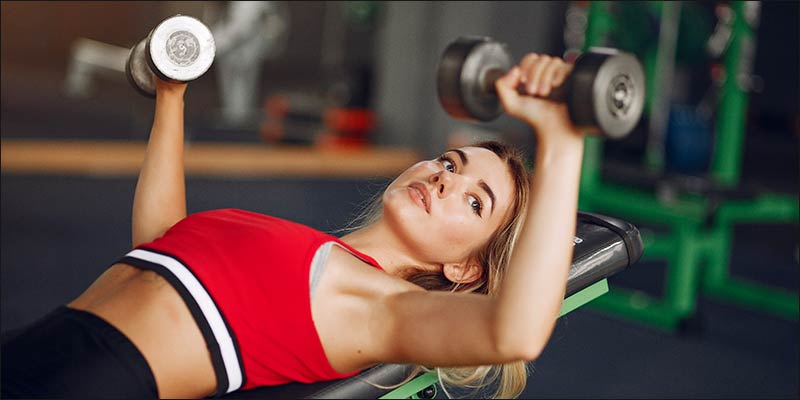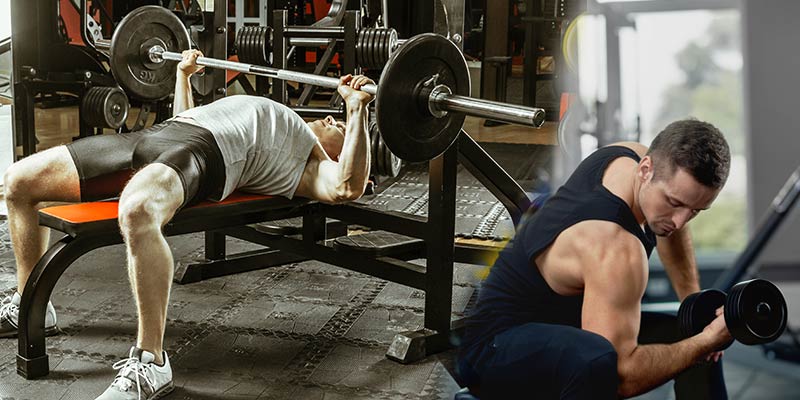When it comes to strength training and achieving a well-defined upper body, a Chest and Bicep workout is a popular choice for many fitness enthusiasts. This workout routine focuses on developing the chest muscles and biceps, which not only enhances your physical appearance but also improves your overall upper body strength. In this blog, we will explore the benefits of a Chest and Bicep workout, provide a comprehensive workout routine, and offer valuable insights to help you maximize your results.
Introduction to Chest and Bicep Workout
Engaging in regular workouts targeting specific muscle groups like the chest and biceps not only enhances physical appearance but also promotes overall strength and functionality. These muscles play pivotal roles in various everyday activities and require specific attention to achieve optimal growth and strength.
Anatomy of Chest and Bicep Muscles
Understanding the anatomy of these muscles is crucial for effective workout planning. The chest comprises the pectoralis major and minor muscles, while the biceps consist of the short and long heads along the upper arm.
Benefits of a Chest and Bicep Workout
A well-structured Chest and Bicep workout can deliver several key benefits:
- Increased Muscle Mass: Targeting the chest and biceps can lead to significant muscle growth, resulting in a more muscular and sculpted upper body.
- Improved Strength: These workouts enhance your upper body strength, allowing you to perform daily tasks with ease.
- Better Aesthetics: A developed chest and biceps contribute to a balanced and appealing physique.
- Functional Fitness: Strong chest and biceps support better posture and can help prevent common upper body injuries.
- Boosted Confidence: Achieving visible results can boost self-esteem and confidence.
Warm-up Exercises
Before diving into the main workout routine, it’s crucial to warm up your muscles to prevent injuries. Start with five to ten minutes of light cardio, such as jogging or jumping jacks, followed by dynamic stretches for the arms and shoulders.
Chest Workout Routine

Bench Press
The workout kicks off with the barbell bench press. This exercise engages all the muscle fibers in your chest and is considered one of the top, if not the very best, workouts for building both strength and muscle mass in the chest. It’s often referred to as the king of upper body exercises, and with good reason.
Dumbbell Incline Press
The dumbbell incline press is an excellent exercise for building significant mass throughout the chest, with a particular focus on the upper region. Studies have shown that incline presses can result in greater upper chest muscle growth compared to using a flat bench.
Standing Cable Chest Fly
The cable chest fly maintains a consistent tension on the muscles throughout the entire exercise, effectively stimulating your pectoral muscles across their complete range of motion. This not only promotes muscle growth but also delivers a satisfying pump.
Push-Up
The push-up has been a timeless staple in the fitness routines of enthusiasts for over a century, helping build a strong and well-defined chest and upper body. While you may not initially consider push-ups as a method for significant muscle growth and strength, you’d be pleasantly surprised. Research indicates that push-ups and bench presses are similarly effective for increasing muscle size and strength.
Bicep Workout Routine

Barbell Curl
We’re commencing with a barbell exercise, which happens to be a fundamental component of various bicep workouts, including this one: the barbell curl. The barbell curl ranks among the top bicep exercises for enhancing arm strength and size, often enabling you to lift heavier weights compared to using dumbbells.
Hammer Curls
The hammer curl is a modified version of the standard bicep curl. What’s noteworthy about hammer curls is their increased emphasis on the forearms, particularly the prominent brachioradialis muscle located on the thumb side of the forearm. Hammer curls effectively engage the long head of the bicep and another upper arm muscle known as the brachialis, all while giving your forearms a thorough workout. This makes it an excellent exercise for cultivating substantial, robust arm muscles.
Incline Dumbbell Curl
During incline dumbbell curls, the positioning of your arms behind your body places your biceps in a stretched and extended state. This can encourage the possibility of more substantial muscle development and result in an impressive muscle pump.
Importance of Proper Form
Maintaining proper form during exercises is crucial for safety and effectiveness. Always use controlled movements, avoid jerking or swinging, and breathe consistently throughout your sets.
Chest and Biceps Workout Same Day

Certainly! Contrary to a widespread belief advocating for separate days dedicated to opposing muscle groups, combining chest and biceps workouts not only works but also proves advantageous. Many athletes adopt this strategy to enhance their training effectively.
When you integrate chest and biceps exercises, you harness a potent synergy. The push movements involved in chest exercises complement the pull movements of bicep exercises, fostering a well-rounded upper body development. This approach ensures a balanced workout, contributing to a more symmetrical and harmonious physique.
Training chest and biceps concurrently offers three key advantages:
- Time Efficiency: Combining these workouts saves valuable time during your training sessions.
- Increased Frequency: This approach allows for the possibility of training chest and biceps twice a week, enhancing overall frequency.
- Enhanced Work Capacity: Integrating chest and biceps workouts can contribute to improved work capacity, promoting more effective and enduring training sessions.
Combining Chest and Bicep Workouts
To save time and enhance muscle engagement, consider combining chest and bicep workouts on the same day. For example, you can pair bench press with bicep curls, allowing your chest muscles to recover while working on your biceps.
Nutrition for Muscle Growth
For optimal results, ensure you are consuming a balanced diet that supports muscle growth. Include lean proteins, complex carbohydrates, and healthy fats in your meals.
Chest and Bicep Workout: Recovery and Rest
Muscles need time to recover and grow. Allow 48-72 hours of rest between chest and bicep workouts. Adequate sleep and hydration are also essential for recovery.
Common Mistakes to Avoid
- Overtraining: Avoid working the same muscle groups on consecutive days.
- Neglecting Warm-up: Skipping warm-up exercises increases the risk of injury.
- Poor Nutrition: A balanced diet is essential for muscle growth.
- Ignoring Rest: Muscles grow during rest, not just during workouts.
Tracking Progress
Keep a workout journal to track your progress. Note the weights lifted, sets, and reps, and periodically reassess your goals to ensure steady improvement.
Conclusion
A well-structured Chest and Bicep workout routine is an effective way to build strength and sculpt your upper body. By following a balanced workout plan, maintaining proper form, and paying attention to nutrition and recovery, you can achieve impressive results. Incorporate this routine into your fitness regimen, and you’ll be well on your way to a stronger, more sculpted upper body.
FAQs
Q1. Can you train chest and biceps together?
Of course! You may be more accustomed to the chest and triceps pairing or the push/pull/legs routine that involves working on your chest, shoulders, and triceps on the same day. Nevertheless, combining chest and biceps training is also an effective approach to organizing your workout sessions.
Q2. How often should I do a Chest and Bicep workout?
It is recommended to train your chest and biceps 1-2 times per week, allowing sufficient time for recovery.
Q3. Can women benefit from Chest and Bicep workouts?
Yes, women can benefit from these workouts as they contribute to overall upper body strength and toning.
Q4. Can I do Chest and Bicep workouts at home?
Absolutely! Many of these exercises can be performed at home with minimal equipment, making it accessible for all.
Q5. How long should I rest between sets?
A rest period of 60-90 seconds between sets is generally ideal to allow for muscle recovery and optimal performance.

